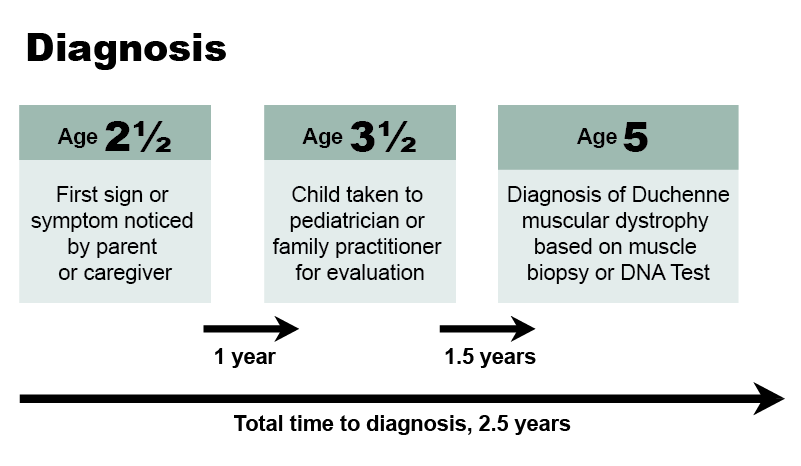Key points
- Early diagnosis for a child with a motor delay allows for early access to medical care, intervention services, and more.
- The AAP and CDC created a tool to help parents concerned with their child's motor delay.

Importance of early diagnosis
Early screening and identification can reduce the "diagnostic odyssey" that families of children with motor delays face seeking a correct diagnosis. Without early identification, families can spend years visiting different doctors and undergoing many tests to reach a diagnosis.
Early screening enables a faster referral to a specialist. Early identification enables quicker access to medical care, early intervention programs, and special education resources.
Delays in diagnosis of muscular dystrophies prevent children and families from getting the timely support they need. According to researchers working on Duchenne muscular dystrophy (DMD), there was average delay of:
- 1 year from parents noticing motor delay to the first evaluation
- 2.5 years from parents noticing motor delay to DMD diagnosis
This study was based on data from children without a family history of muscular dystrophy. An updated study showed that the time to diagnosis had not changed.1

Tool to help parents address concerns
CDC and AAP created Does My Child Have Physical Developmental Delays? to help parents concerned about their child's motor delay. This online quiz is designed to reduce the time to diagnosis and get children with motor delays into services. Parents can identify “red flags” they see when their child stands, walks, climbs stairs, holds toys, and other activities. The quiz also helps parents prepare to talk to their child’s doctor.
Resources
- CDC's Learn the Signs. Act Early.
- The American Academy of Pediatrics' Clinical Report on Motor Delay.
- The American Academy of Pediatrics' Bright Futures.
- Clinician Tool: Early Diagnosis of Muscle Weakness
- Thomas, S, Conway, KM, Fapo, O, et al. Time to diagnosis of Duchenne muscular dystrophy remains unchanged: Findings from the Muscular Dystrophy Surveillance, Tracking, and Research Network, 2000-2015. Muscle & Nerve. 2022; 66(2): 193-197. doi:10.1002/mus.27532
- Ciafaloni E, Fox DJ, Pandya S, Westfield CP, Puzhankara S, Romitti PA, Mathews KD, Miller TM, Matthews DJ, Miller LA, Cunniff C, Druschel CM, Moxley RT. Delayed diagnosis in Duchenne muscular dystrophy: data from the Muscular Dystrophy Surveillance, Tracking, and Research Network (MD STARnet). J Pediatr 2009 Sep;155(3):380-5.
